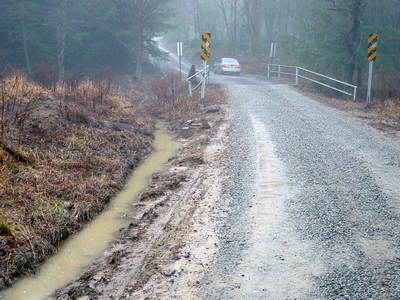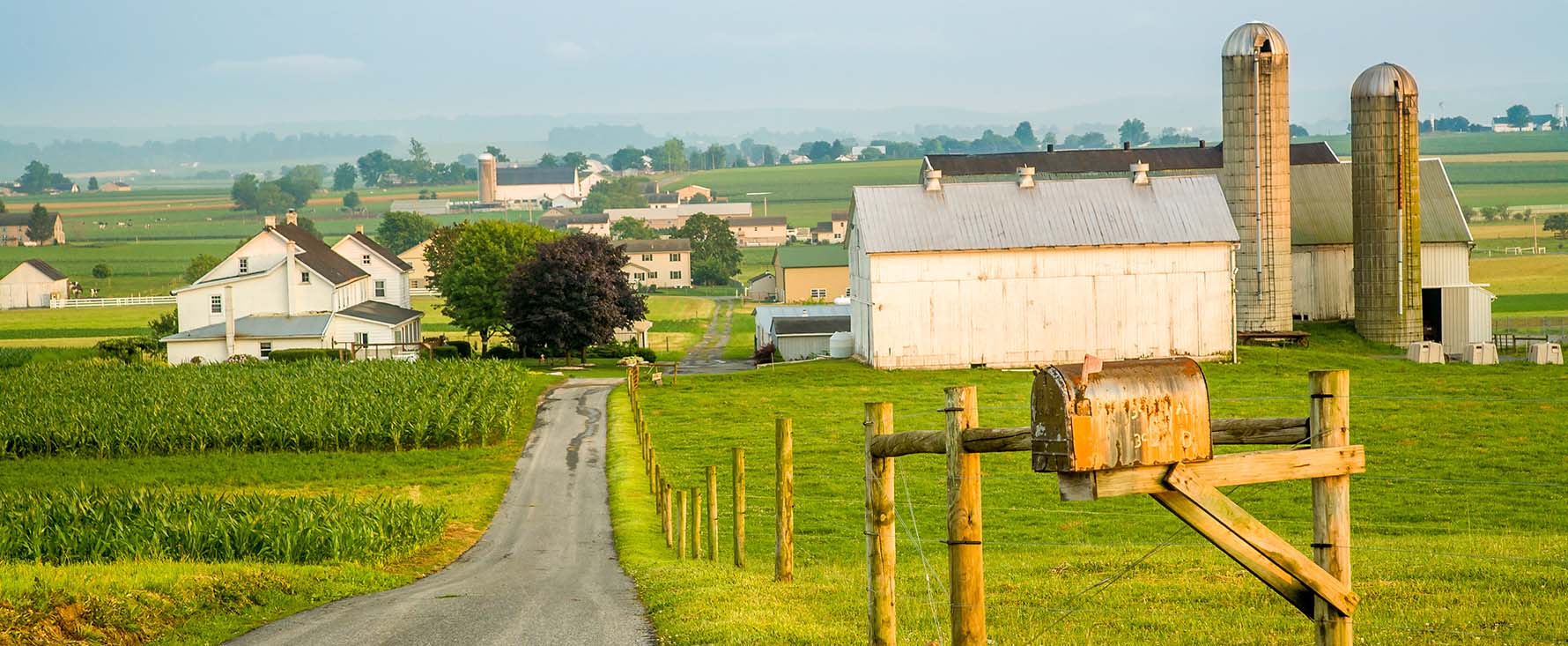Unpaved Roads and Sediment
Sediment is the largest pollutant by volume to the waters of the Commonwealth of Pennsylvania. Pennsylvania’s 20,000 miles of publicly owned unpaved roads are a prime example of non-point source pollution. Unpaved roads not only generate sediment, but also act as collectors for runoff and sediment from adjacent land uses. Traditional practice in road maintenance has been to convey water along roads and deposit it into streams by the quickest means possible. This practice results in increased flood flows in streams and transports sediment and a host of other pollutant into local waterways.

sediment
Runoff from an unpaved road enters a high-quality stream at one of Pennsylvania's thousands of stream crossings
Unpaved Road Inventory
The Pennsylvania Chapter of Trout Unlimited (TU) first brought the problem of unpaved road runoff into the spotlight in 1991. TU sportsmen in Centre and Potter County State Forests were the driving force behind the developing grassroots effort to reduce sediment pollution from dirt and gravel roads.
A Task Force on Dirt and Gravel Roads was created in 1993 to investigate, research and document the significance of sediment and dust, as well as other forms of water pollution resulting from dirt and gravel road maintenance practices. This private-public partnership enlisted members representing nonprofit organizations, businesses and local, state, and federal government agencies.
In the summers of 1996-1998, volunteers from TU went out at their own expense and drove thousands of miles of roads in an effort to identify pollution sites on Pennsylvania’s dirt and gravel roads. TU inventory volunteers recorded locations where roads were adversely impacting a stream, concentrating on Pennsylvania’s High Quality and Exceptional Value watersheds. The efforts put forth by the volunteers resulted in the identification and assessment of over 900 sites in protected watersheds statewide. These sites became the basis for creating the Dirt and Gravel Road Maintenance Program.

Pennsylvania's High Quality (light blue) and Exceptional Value (dark blue) watersheds
Section 9106 of the PA Vehicle Code
The Task Force achieved its goal in 1997 when a law (Section 9106 of the PA Vehicle Code) was enacted establishing the Pennsylvania Dirt and Gravel Road Maintenance Program. The law provided a non-lapsing annual allocation of $5Million, with $4Million going to the State Conservation Commission and $1M going to the Department of Conservation and Natural Resources. The Dirt and Gravel Road Maintenance Program follows a few key concepts including: local control over projects and decision making; education and training to local stakeholders; simplified grant applications; and implementing long term road and environmental improvements
Program Timeline
Low Volume Roads
Act 89 of 2013 specifies that “A minimum of $8,000,000 of the total appropriated annually shall be for maintenance and improvement of (paved) low-volume roads.” The act further defined low volume roads as “sealed or paved with an average daily traffic count of 500 vehicles or less.” The low volume road portion of the Program focuses on the same environmental improvements as the Dirt and Gravel Road portion, not just paving and re-paving roads.





